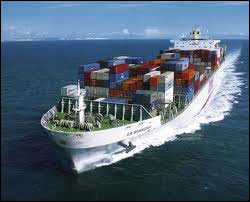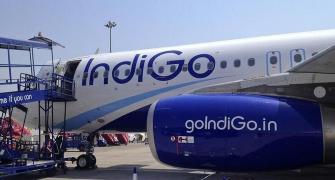The cyclical shipping industry continue to sail on rough sea with average monthly freight rates across major asset types continue to be lower on year on year basis. Weak freight rates are largely on account of supply outstrips demand across all asset classes. As freight rates stay lower the profitability of the industry is under constant pressure with rising operation cost.
 The average shipping rates for the period of April 2012-Feb 20, 2013 was lower across all asset classes. The average rate of Baltic Dry Index for the period was lower by 36.62% to 904.14 points. The average rate of Baltic Dirty Tanker Index (BDTI) and that of Baltic Clean Tanker Index, the barometer for crude and product tanker segment was lower by 12.68% (to 681.96 points) and 10.28% (to 645.18 points) respectively.
The average shipping rates for the period of April 2012-Feb 20, 2013 was lower across all asset classes. The average rate of Baltic Dry Index for the period was lower by 36.62% to 904.14 points. The average rate of Baltic Dirty Tanker Index (BDTI) and that of Baltic Clean Tanker Index, the barometer for crude and product tanker segment was lower by 12.68% (to 681.96 points) and 10.28% (to 645.18 points) respectively.
The share of Indian flagged vessels has been coming down over the years. Currently, only around 8% of total EXIM trade of India is done by Indian flagged vessels. The country though moved to tonnage regime the tonnage under Indian flag has not increased with major part of the Indian freight bill (over Rs 60000 crore) is paid out of the country as mercantile fleet under Indian flag is miniscule. Even Indian companies prefer to register their fleet under the flags of other countries such as Singapore etc as they continue to see competitive disadvantage due to factors such as service tax on input services, stringent regime of seafarer taxation etc.
It’s important to have a certain percentage of tonnage in every cargo sector under Indian flag as it maintains the supply line for essential cargo in case of emergency (refusal of foreign flag vessels to call Iran etc) and to guard against undue freight charges by cartels and monopolies (e.g. Dredging).
Industry Wish-list
Book profit on sale of qualifying assets should be treated as 'core shipping income' and should be excluded from book profits while computing MAT liability.
Income from deployment of statutory reserves (income generated through deployment of cash maintained as per statutory reserve for ship acquisition in short term investments till the time statutory reserve are utilized for acquisition of ships) should be treated as income from core activity of a tonnage tax company and should be subjected to tax accordingly.
Infrastructure status be granted to 'ships and other vessels' (as defined under the Merchant Shipping Act, 1958) as one of the steps to rationalize, strengthen and provide environment conducive to the growth of Indian shipping sector. In-fact the Indian shipping industry fulfills the characteristics of infrastructure as mentioned in the harmonized Master List of infrastructure sub-sectors. Granting infrastructure status would mean reduced cost of borrowings to buy technologically advanced and environment friendly ships leading to increased trade volumes resulting in higher employment and higher foreign exchange earnings/ savings.
Set up a 'shipping modernization fund' for growth of Indian flag shipping. Shipping, being capital intensive, requires huge funds for financing ship acquisitions depending upon the market conditions. Funds are mobilized largely through external commercial borrowings and internal generations. In the current depressed shipping scenario, it is uncertain as to how the shipping companies will be able to source the equity and debt requirement for acquisition of ships. As the shipping industry is in substantial need of funds for acquiring tonnage, it is essential that the Govt. of India set up a fund to support the national fleet, thereby enabling access to funds.
Customs duty should be exempted on vessels used in international commercial transportation business.
Seafarer's tax should be abolished inorder to retain talent.
There should also be an exemption from service tax on several inputs also, he said.
Proposal of Union Budget 2012-13
|
Tonnage Tax |
||
|
Qualifying Ship having net tonnage |
Existing amount of daily tonnage income |
Proposed amount of daily tonnage income |
|
Upto 1000 |
Rs 46 for each 100 tons |
Rs 70 for each 100 tons |
|
Exceeding 1000 but not more than 10000 |
Rs 460 plus Rs 35 for each 100 tonns exceeding 1000 tons |
Rs 700 plus Rs 53 for each 100 tonns exceeding 1000 tons |
|
Exceeding 10000 but not more than 25000 |
Rs 3610 plus Rs 28 for each 100 tonns exceeding 10000 tons |
Rs 5470 plus Rs 42 for each 100 tonns exceeding 10000 tons |
|
Exceeding 25000 |
Rs 7810 plus Rs 19 for each 100 tonns exceeding 25000 tons |
Rs 11770 plus Rs 29 for each 100 tonns exceeding 25000 tons |
This amendment will take effect from 1st April, 2013 and will, accordingly, apply in relation to the assessment year
2013-14 and subsequent assessment years.
The 5% CVD on foreign-going vessels on conversion for coastal trade shall now be charged on proportionate basis depending on the period for which it operates as a coastal vessel in India. The value shall be taken as the lease value when the import is against a lease agreement/ contract.
Analyst expectations
Greater possibility is for status quo to continue even though the industry expects infrastructure status and setting up of shipping modernization fund. If the industry gets service tax waiver as expected by the industry that will do a lot in improving the competitive edge of the industry.
Stock to watch
Shipping Corporation, Great Eastern Shipping and Mercator Lines.
Outlook
Fortunes of shipping industry being linked to global trade but given current economic slowdown across the globe the shipping market may hardly see a fundamental rollover of its current downturn in CY2013. Materialization of shipping fleet modernization fund etc in Union Budget 2013-14 will boost the industry expanding the fleet when the asset value is down.








